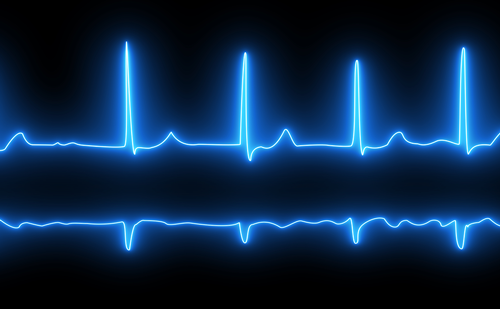Introduction: Outcomes of ablation for atrial fibrillation (AF) remain suboptimal, and strategies outside pulmonary vein isolation (PVI) vary. The AcQMap 3D imaging and mapping system (Acutus Medical, CA, USA) uses ultrasound to reconstruct the atrial chamber anatomy, whilst an inverse solution uses the non-contact unipolar voltage electrodes to derive charge density propagation maps in order to visualize complex arrhythmias. This study aimed to assess outcomes of ablation procedures using this system.
Methods: Demographic, procedural and outcome data was prospectively collected from 42 patients with persistent AF who underwent an ablation procedure guided by the AcQMap system. PVI was first undertaken (or checked if previously undertaken), followed by an individualized approach targeting the conduction pattern core with an extension to the nearest non-conducting boundary. Endpoint was freedom from atrial arrhythmia recurrence, defined as at least 30 s of documented arrhythmia, with or without the use of antiarrhythmics, and evaluated at 3, 6 and 12 months, and if symptomatic, from ECGs and Holter monitoring. A blanking period of 3 months was employed. Outcomes were compared with a control group undergoing PVI only, matched for age and sex. Statistical analysis was performed using Cox proportional hazards models with covariates of age and gender using SPSS.
Results: 42 patients (61.0 ± 11.0 years old, 79% male) underwent index procedure (35%) or repeat procedure (65%). At the onset of the procedure, 33% of patients were in sinus rhythm, 60% were in AF and 7% were in atrial flutter. Mean BMI was 27.8 and risk factors included: 10% heart failure, 26% hypertension, 12% previous cerebrovascular accident, 2% diabetes. All procedures were undertaken under general anaesthesia. Mean procedure duration was 225 ± 51.3 minutes and mean fluoroscopy time was 34.4 ± 12.3 minutes. Adverse events included one pericardial effusion. In all index procedures, the PV were isolated. In redo procedures, re-isolation was required in 30.1%. Further AcQMap-guided lesion sets were as follows: adjacent to left PV (21%), adjacent to right PV (21%), LA anterior wall (62%), LA posterior wall (52%), base of LA appendage and/or ridge (31%), roof line (14%), mitral isthmus line (14%), right atrium (35%). A cavo-tricuspid isthmus line was also completed in 7%. At 12 months, freedom from AF was present in 64% of patients. In a matched control group (n=42, 62 ± 9.6 years old, 79% male) undergoing PVI alone by point-by-point radiofrequency ablation either using the Carto (61%) or Ensite (39%) mapping systems, freedom from atrial arrhythmia at 12 months was present in 48% of patients.
Conclusion: The AcQMap system is a safe method in guiding ablation of conduction pattern cores in AF patients. In a small single-centre cohort, 64% freedom from AF at 12 months was found. The most common location for conduction pattern cores was the LA anterior wall. Larger randomised control studies are required to investigate whether the AcQMap system can demonstrate improvements in long-term outcomes over conventional strategies.

















